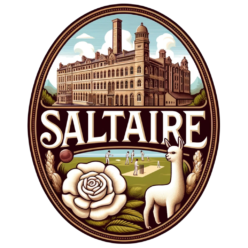The architectural partnership of Lockwood and Mason, formed by Henry Lockwood and William Mawson, is often celebrated for its significant contribution to the 19th-century urban landscape in Northern England.
Their work, particularly in collaboration with the industrialist Sir Titus Salt, has left an enduring mark on the region, epitomized by the model village of Saltaire.
The Formation of Lockwood and Mason
Henry Lockwood and William Mawson established their architectural firm in the mid-19th century. Lockwood, born in 1811, brought to the partnership a keen eye for detail and a deep understanding of classical architecture.
Mawson, his counterpart, had a strong sense of space and urban planning. Together, they combined their talents to create designs that were both aesthetically pleasing and functionally sound.
The Collaboration with Titus Salt
Titus Salt was a leading industrialist of the time, known for his progressive views on worker welfare and social responsibility.
In the 1850s, Salt decided to relocate his textile mill from the polluted environs of Bradford to a more healthful location. This decision led to the creation of Saltaire, a model village designed to provide a healthy and self-contained environment for Salt’s workers and their families.
Lockwood and Mason were commissioned to design Saltaire, including its mill, housing, and public buildings.
Their design philosophy for Salitaire was groundbreaking; it not only focused on the functional aspect of housing and workspace but also paid great attention to the aesthetic and communal needs of its inhabitants.
The result was a village that offered clean, well-built homes, a hospital, a school, a church, and recreational facilities—a rarity in the industrial era.
Saltaire is considered one of the most complete and well-preserved examples of a model village in the United Kingdom, recognized for its historical and architectural significance with a UNESCO World Heritage Site designation.
Other Notable Works
Beyond Saltaire, Lockwood and Mason’s portfolio includes a variety of other significant projects. In Bradford, they designed the St. George’s Hall, one of the oldest concert halls still in use in the United Kingdom.
Their work on Bradford’s Wool Exchange further exemplifies their skill in creating functional yet grand public buildings that have stood the test of time.
Their influence extended to other parts of Yorkshire and beyond, with commissions ranging from grand civic buildings to educational institutions and churches.
Each project demonstrated their versatility and ability to adapt to different styles, from Gothic Revival to Italianate, always with an emphasis on quality and durability.
Legacy
The work of Lockwood and Mason, particularly in partnership with Titus Salt, represents a significant chapter in the history of British architecture and urban planning.
Their vision for Saltaire was not just about building a factory and houses but about creating a community that would improve the lives of its residents. This ethos, considered revolutionary at the time, has since influenced urban development projects worldwide.
Their buildings, characterized by attention to detail, a strong sense of proportion, and the use of quality materials, continue to be admired for their architectural merit and social significance.
The legacy of Lockwood and Mason lives on, not just in the physical structures they left behind, but in the ideals of community and social responsibility that those structures embodied.

